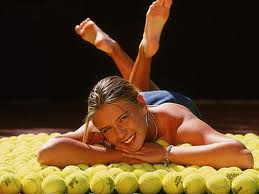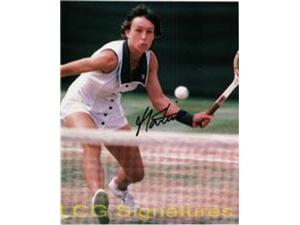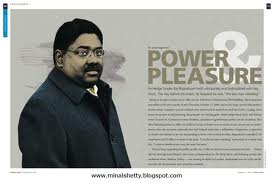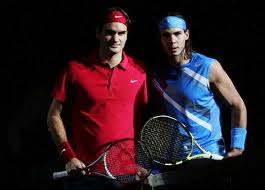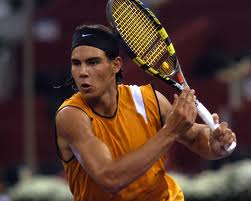There are few tennis tournaments like the U.S. Open. It is a big tennis carnival that draws more fans and contributes more to the New York City economy in it’s 2 weeks of activity than the Yankees or Mets in the same time period. When you look at the ecosystem of the US Open in terms of revenue generated by the tournament, revenue generated by New York City businesses and other multipliers you have a billion dollar tennis extravaganza. The US Open is wholly owned by the United States Tennis Association (USTA) and 50% of that revenue, more than $100 million, shows up as bottom line profit for the USTA. So how big is the US Open nut and how do you back into the numbers that make tennis’ leading extravaganza so extravagant?
Our number for the US Open total revenue plus economic multipliers is somewhere around $1.4 billion. Here is our quick breakdown of US Open revenue as provided by massaging numbers presented by the USTA and the city of New York as well as the “multiplier” effect the Open has on its sponsors and players.
Deep Diving on the USTA Revenue Number for the US Open.
For the past several years the USTA has reported revenue of more than $200 million from the US Open. We backed into these numbers by using several of the USTAs own numbers, published sources of information and filled in numbers based on guesstimates when needed. Here is our breakdown of the $210 million in revenue shown in the chart below.
US Open revenue is anchored by ticket sales to more than 720,000 fans at an average estimated cost of $120 for a total amount of $85 million. With tickets sales alone, the USTA almost breaks even on expenses for the event as the USTA states that it has more than 50% profitability from its annual revenue of $210 million. Likewise, US Open sponsorships garner more than $60 million annually from heavyweight advertisers like IBM, JP Morgan Chase and American Express, all trying to reach the elite US Open tennis fan where attendees median income is $150,000 and the majority are women.
Another $60 million of revenue comes from television. Tennis tv viewership has plummeted since their 1981 high when 8 million people or more than 4% of Americans watched John McEnroe vs. Bjorn Borg. Nevertheless advertisers want to reach the high-earning, remaining 2 million people, less than 1% of Americans, who still watch tennis on network tv. Tennis still earns roughly $24million from CBS for prime time and another $23 million from ESPN and the Tennis channel. Additional incentives bump the gross up as well as web and other broadcast/rebroadcast rights.
To fill the gap we publish a miscellaneous licensing and sponsorship fees for the grounds as well as website advertising and other cross-promotional numbers which get us to the $210 million mark. The USTA should feel free to publish the real numbers though we feel comfortable with the numbers below and think it is more important to be thematically and directionally correct than to have 100% accurate numbers i.e. these are estimates.
| Category | USTA Revenue (Millions) |
| Ticket Sale | $ 86 |
| TV Network CBS | $ 24 |
| ESPN | $ 23 |
| Vendor Sales Licensing | $ 7 |
| TV Advertising (partial) | $ 5 |
| TV Cable Advertising (partial) | $ 5 |
| Tournament Sponsorship | $ 60 |
| Miscellaneous Suite Sponsorship | ??? |
| Total | $ 210 |
The US Open Multiplier Effect.
The US Open is the principal money-maker for the New York based USTA providing more than 80% of its revenue for the year. Also, New York City, surrounding areas and localities where fans emanate from experience a significant bump to their business as part of a US Open multiplier effect. Past estimates from a 15 year old study are that the US Open generates more than $420 million in revenue for New York. More recent commentary says that the numbers have not changed radically, however in a day of $10 burgers and $5 round trip subway rides, the economic impact of the US Open is grossly underestimated.
We back into the numbers two ways. First we try the high level approach of adjusting for inflation. Using Consumer Price Index (CPI) rates as published by the US Bureau of Labor Statistics we take the 2010 CPI of 2.18 and divide it by the 1995 CPI of 1.52. This creates a multiplier of 1.43 which we use against the $420 million figure. When accounting for inflation, the real revenue multiplier to New York City and surrounding areas is close to $600 million in 2010 dollars.
Second, we use a method of estimating economic multipliers by category. This approach is tricky business as Victor A. Matheson of Holy Cross University argues against the US Open’s multiplier saying they do not consider substitution, i.e. people who spend $100 at the US Open would spend the same amount at Jones Beach if it wasn’t happening that weekend. Matheson argues there is no way the US Open accounts for 3- 5% of all tourism dollars spent in New York City.
This article does not argue the US Open’s direct impact on the Tri-State economy as much as the combined direct and indirect impact. So for example, is the US Open directly responsible for any and all Broadway sales or sight-seeing, cab usage or rental car bump in traffic over Labor day’s weekend and surrounding two weeks when most New Yorkers are out of town. The answer is NO. However, does the US Open influence families were the husband may want to go watch a match and his wife might want to do sight-seeing while the teenage kids go to see Spiderman on Broadway? Or in other cases where a family may come in for one day of tennis and another day of sightseeing, etc? CERTAINLY!
In addition, there is also the issue of re-purposed dollars which we address qualitatively. For example if New York resident Jane Doe usually takes the subway on Saturdays to the farmer’s market in Manhattan but instead takes it to the US Open on Saturday of Labor Day weekend she is spending money she would have already spent on the subway, but in this case, it is being spent on the Open.
Also, we assume the average US Open tournament-goer is in the highest income bracket where spending $1,000 on a 2 day excursion to New York is not excessive. The US Open has reported that its median attendee has income greater than $150,000 a year.
So where does the $600 million come from or go? Here are our guesstimates based on an economic modeling approach rather than a bottom-up rollup of expenses that only New York City and other areas can provide. Again, our estimates are on a total economic multiplier rather than just that for New York City and the surrounding tri-state area. We do not consider global advertising impact from those who watch the US Open on television worldwide though that also bolsters the numbers.
Ticket Resales and On-Site Revenue:
US Open on-site revenue is similar to the movies as customers are expected to spend as much during the day on food, clothing and memorabilia as they do on tickets to enter. Assuming total ticket revenue of $85 million from 720,000 customers we can see the same customers spending money on $10 hamburgers, multiple $5 beverages, $15 health food plates, $30-50 tennis sports wear, $25 US Open tournament brochures and other types of items and memorabilia.
Other web sites also discuss the availability of tickets that are resold on the US Open site, Stub Hub or other sites. We estimate roughly 20% of all US Open tickets are resold at an increment on average equal to the original ticket price. Forbes magazine reports that more than 100,000 US Open tickets sold in 2010 on the secondary i.e. scalped, market with average prices of tickets by round incrementing roughly $50 per round with the finals selling at a price of $350 per ticket. These prices were quoted 2 weeks before the final which probably saw the price increase with a final between Rafael Nadal and Novak Djokovic. In the past, showdowns between Sampras and Agassi have fetched more than $1,000 on the secondary market a day before the match. Although our final estimate for resale is $17 million in total, if we calculated using an average resale using the Forbes estimate of $50 per round, the actual number is higher.
Accommodations and Transportation
The largest multiplier expense and the largest expense for the US Open is the Accommodations and Transportation multiplier. Half of all attendees come from outside the tri-state area. We expect attendees to spend the same amount on hotel and accommodations as they spend net on the tournament. So if the average attendee spends $125 on a ticket and $125 on food and memorabilia, then we expect them to spend roughly $250 on accommodations per night.
Other significant expenses are the plane fare for 180,000, around $450 (remember for every penny-saver flight there is a high net worth flying a higher class travel) or driving expense. Driving expense for the average US Open ticket-goer who drives 600 miles to the event is roughly $300 for 5 tanks of gas, plus food and beverage along the way, tolls and parking or somewhere around $450. There is also transportation to and from the airport on average about $120 as taxi fares including tolls and tip exceed more than $50 from all locales and from Newark Airport can go as high as $80 one way.
Besides the New York City cost of airport transportation, we also include the cost of airport transportation to and from the 180,000 tourists local airports at about $100 as well when including overnight car parking or cab fare to the airport plus other expenditures including memorabilia, food and drink. About 20% of all attendees park at the US Open at a cost of $20 plus more than $10 of tolls and roughly $10 of gasoline round trip. Likewise many attendees rent cars who stay on NYC outskirts to get cheaper hotel accommodations or for concurrent business trips, another 2-day $100 expense. (We don’t break that out from the general hotel fee). About 80% of attendees take the subway or other public transportation to the US Open with some incremental cost.
Note: we do not consider the impact of luxury US Open tours sponsored by the likes of American Express which include box seats and meet the player events, but that surely would raise the number.
Other New York Activities
We expect that half the people who travel to the US Open (180,000) spends on average an extra day enjoying NYC and its cultural activites. We expect that person to spend roughly the same on their second day as they do at their day at the Open. Whether seeing a Broadway show, average ticket price $100 and then having dinner, average price $50-75 with commensurate cab fares, taxes and tips, we have no problem estimating another $250 spent on day 2 of a trip to NYC.
Endorsements and Direct Sales
Beyond the normal multipliers that we consider of NYC expense and transportation expense we also consider direct sales channels for US Open tickets and special vendor considerations. We estimate that 20% of all purchasers are USTA members who are primarily members to get access to early sales of US Open tickets. At $75 for an average family membership the USTA may make as much as $10 million from memberships sold for US Open early access. Likewise we estimate 20% of all purchasers are American Express users for the same reason. With varying expense, we assume an average American Express card annual expense of $150.
Also, we look at player endorsements and other economics. Maria Sharapova makes $25 million a year in endorsements. Venus and Serena Williams, Roger Federer, Rafael Nadal make in excess of $10 million in endorsements. Other players have multi-million dollar endorsement deals. We add up all the estimated cumulative tennis endorsement money and divide it by the number of grand slams (4) and come up with an estimate of economic endorsement value to players of $50 million. Many may disagree with this number and the reliance on grand slam credibility but even Anna Kournikova who had a $50 million endorsement agreement with Adidas won a grand slam championship in doubles with Martina Hingis.
Besides endorsement money, there are other economics in play. Martina Navratilova and Rod Laver have recently been seen at the US Open signing autographs. A Martina Navratilova autographed tennis ball sells on the secondary markets for $195, a Rod Laver tennis ball – $145. Navratilova and Laver also have autobiographies they sell. Vendors may generate $85 million in revenue, but they also pay some factor of that money in salary to their service and sales people who then spend it on other things. Likewise for secondary sales agents, etc.
Intangible Economics
Lastly we have intangible economics of the US Open. As we learned from hedge fund billionaire’s, Raj Rajnataram’s insider trading trial, the US Open is a magnet for business deal-making. In one 3 day weekend, Raj took a vacation and made $30 million. At the US Open, he met with Arun Sarin the former CEO of Vodafone to discuss Sarin’s launch of a Telecom hedge fund. George Soros is known to be a player as is Bill Ackman, all hedge fund billionaires. Many deals and meetings like this are done over the two weeks of the US Open and there is some unquantified economic impact which is of great value to New York City and probably only New York.
| US Open Multiplier Effect | |
| New York and Other Area | US Open Economic Multiplier (in Millions) |
| Estimated from Study ($420 million * CPI) | $ 602 |
| Vendor Sales | $ 86 |
| Ticket re-sale | $ 17 |
| Ticket Resales and On-Site Sales SubTotal | $ 103 |
| Hotel Rooms (1 day) | $ 43 |
| Hotel Rooms (2 day) | $ 86 |
| Airline | $ 81 |
| Car (transport and parking) | $ 81 |
| Airport Transportation (NYC) | $ 25 |
| Airport Transportation (non-NYC) | $ 18 |
| Parking (Parking + Tolls) | $ 4 |
| Transportation Taxi | $ 17 |
| Transportation (Subway / Bus) | $ 2 |
| Accomodations and Transportation | $ 359 |
| Other New York Activities | $ 54 |
| Player Endorsements | $ 50 |
| American Express Memberships | $ 23 |
| USTA Memberships | $ 11 |
| Endorsements and Direct Sales | $ 84 |
| Deal-making | ???? |
| New York and Other Area Subtotal | $ 601 |
Sponsor Multiplier
The Sponsor Multiplier is the amount of revenue sponsors expect to make from advertising at the US Open or on television. The total sponsorship dollars spent at the US Open exceeds $60 million. Likewise, television revenue is roughly $60 million (and we expect television advertising rates to be far higher). Minimally we expect the revenue generated by the sponsors and advertisers from the tourney is at least equal to the amount spent on sponsorship plus advertising. So the net impact of advertising at the US Open would minimally have a net zero impact to the bottom line. $120 million of sponsor and advertiser revenue gives an additional economic impact bringing the total economic value of the US Open to $920 million.
But the US Open’s core sponsors have long time relationships. Relationships like these are developed due to profitability. Since US Open sponsor products vary between high end and low end, we estimate the average profitability for US Open advertisers is 20%. If sponsors are looking for a 1:1 return on their advertising dollar to bottom line profitability then we would expect the top line revenue would be 5 times profitability i.e. one fifth bottom line times five times revenue is 1:1. So if sponsors and advertisers pay $120 million a year for the US Open, we expect their revenue generated to be $600 million driven by the tournament or a total US Open economic value of $1.4 billion.
A real world example benefits. Let’s say all US Open ticket holders are American Express holders and spend $1,000 a year (or while on their trip to NYC) due to advertising and sponsorship at the US Open. The Amex fees on the $1,000 is $30 and the annual fee for the Amex card is $150. $180 out of $1,000 is about a 20% profit margin. 700,000 ticket holders spending $1,000 each on Amex due to US Open advertising is $700 million of economic value.
The reality, according to American Express financial statements, is that Amex’ corporate cardholders spend on average card a whopping $11,213 annually or almost $1,000 a month. So the multiplier may be significantly greater. Many of the US Open sponsors, like Amex, are headquartered in the NYC area as is the USTA.
Summary
The US Open is a powerful economic force for its stakeholders, the USTA, New York City and surrounding areas, sponsors and advertisers. Though existing estimates hold the total US Open economic value at around $620 million for the USTA and the New York City tri-state area, when reviewed on a holistic basis and adjusted for inflation the total economic value of the US Open is closer to $1.4 billion when considering all locales and the breadth of advertising reach.
Probably the economics of Wimbledon and the other slams are similar to the US Open in many ways which allows for the prize money they offer.
Closing Thought
Though the US Open provides substantial economic benefits to all involved it is an underperformer in the world of sports events. If US tennis had the same crowds as in the 1980s or had maintained the same market share, the economic potential for the US Open would be 2-3 times the existing economic impact. Next we discuss ways to improve the US Open and how the USTA’s stewardship of tennis succeeds and fails the sport.






